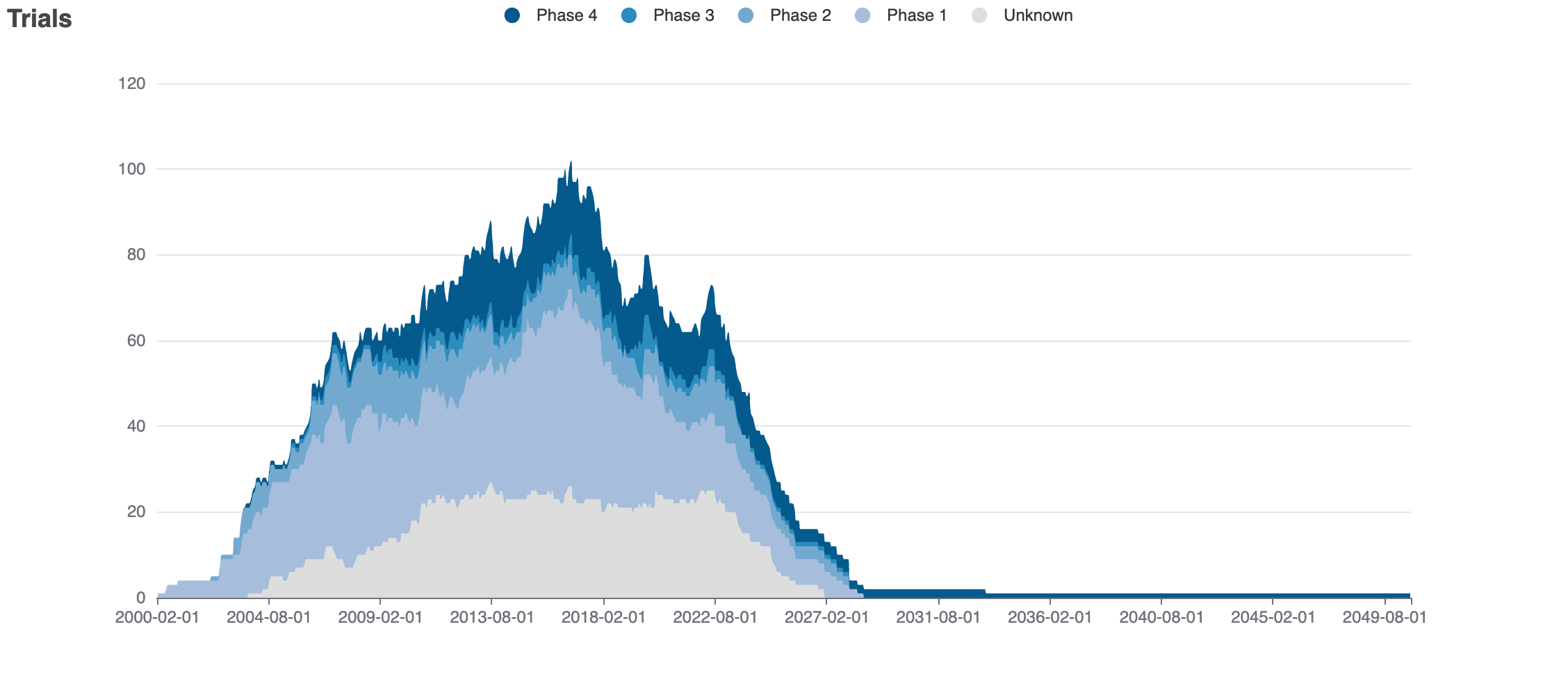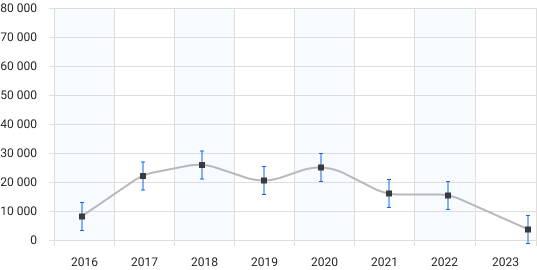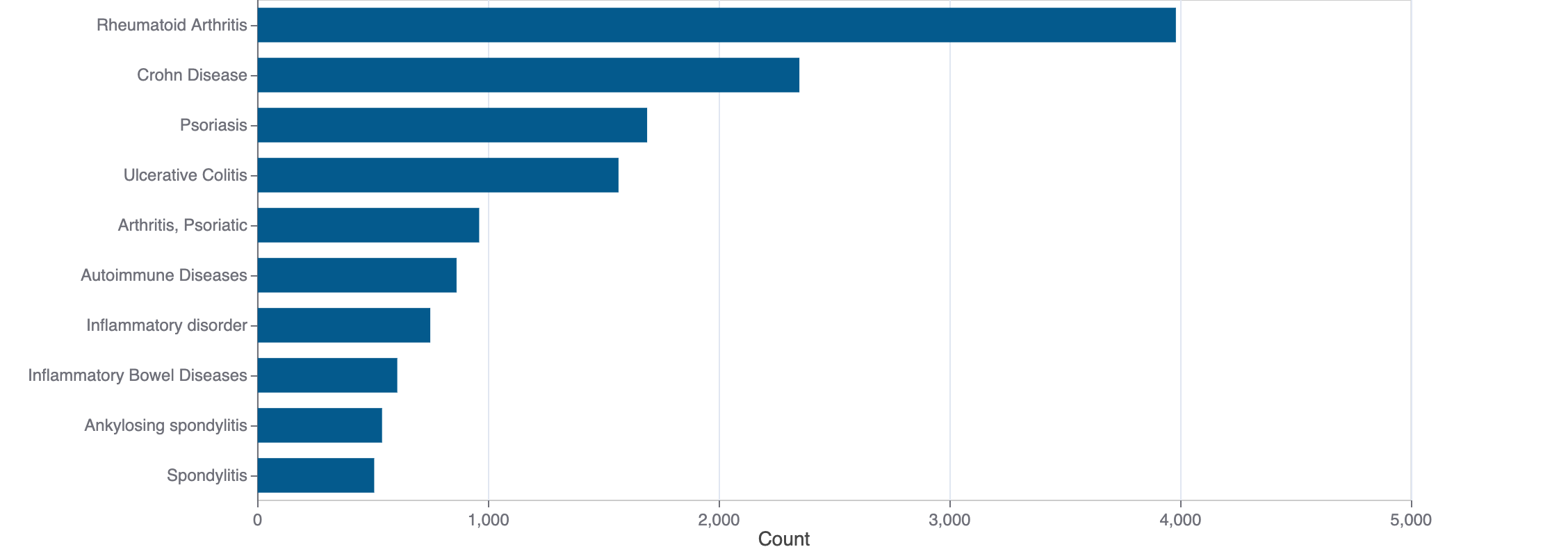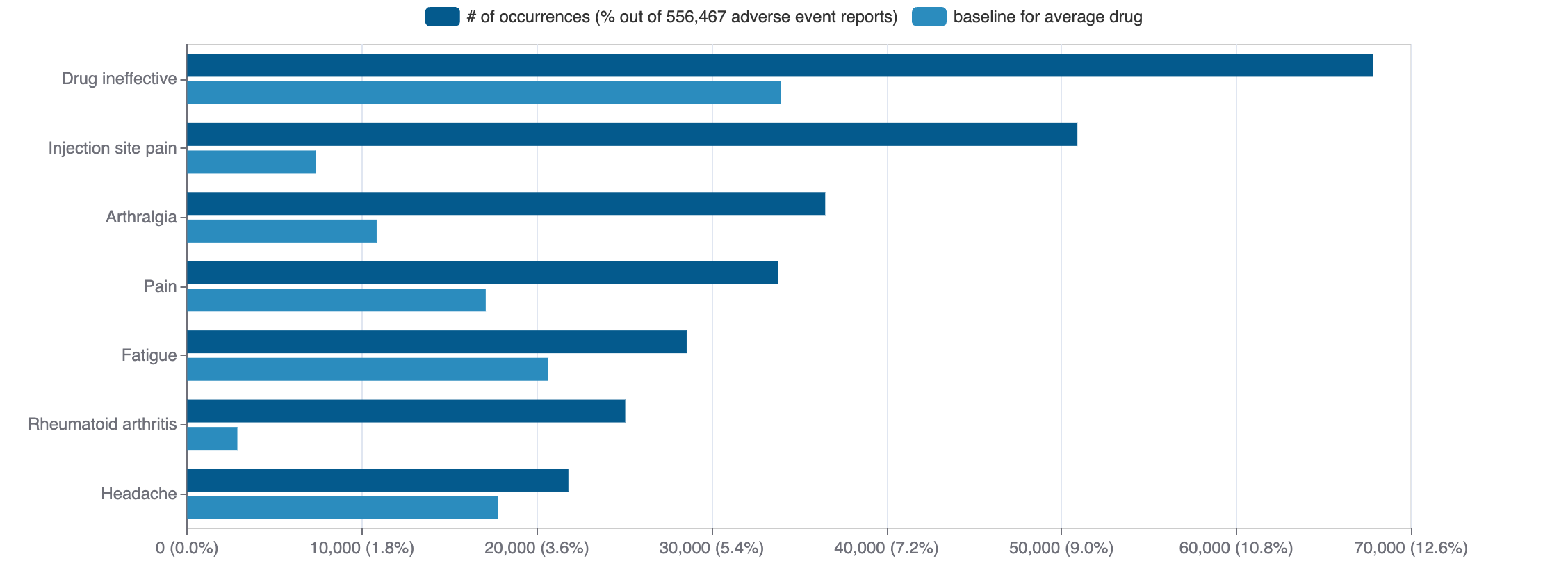Phenytoin
Dilantin, Phenytek, Phenytoin (phenytoin) is a small molecule pharmaceutical. Phenytoin was first approved as Dilantin-125 on 1982-01-01. It is used to treat epilepsy, status epilepticus, temporal lobe epilepsy, and tonic-clonic epilepsy in the USA. The pharmaceutical is active against sodium channel protein type 2 subunit alpha.
Download report
Favorite
Events Timeline
Commercial
Clinical
Drug
Target
Variants
Financial
Trends
Safety
Events Timeline
5D
1M
3M
6M
YTD
1Y
2Y
5Y
Max
Events
FDA approval date
EMA approval date
Patent expiration date
Study first post date
Last update post date
Start date
Primary completion date
Completion date
Results first post date

Mock data
Subscribe for the real data
Subscribe for the real data
Commercial
Therapeutic Areas
Therapeutic Area | MeSH |
|---|---|
| nervous system diseases | D009422 |
| signs and symptoms pathological conditions | D013568 |
Trade Name
FDA
EMA
Dilantin, Extended phenytoin, Phenytek, Phenytoin (discontinued: Dilantin, Diphenylan, Extended phenytoin, Phenytek, Phenytex, Phenytoin, Prompt phenytoin)
Drug Products
FDA
EMA
New Drug Application (NDA)
New Drug Application (NDA)
Abbreviated New Drug Application (ANDA)
Abbreviated New Drug Application (ANDA)
Labels
FDA
EMA
Brand Name | Status | Last Update |
|---|---|---|
| dilantin | ANDA | 2025-10-02 |
| dilantin infatabs | ANDA | 2025-07-10 |
| dilantin kapseals | 2009-05-28 | |
| dilantin-125 | New Drug Application | 2023-02-02 |
| extended phenytoin sodium | ANDA | 2025-11-17 |
| phenytek | ANDA | 2025-01-29 |
| phenytoin | ANDA | 2025-09-17 |
| phenytoin infatabs | ANDA | 2025-06-27 |
| phenytoin sodium | ANDA | 2025-11-07 |
Indications
FDA
EMA
Agency Specific
FDA
EMA
No data
Patent Expiration
No data
Clinical
Clinical Trials
121 clinical trials
View more details

Mock data
Subscribe for the real data
Subscribe for the real data
Indications Phases 4
No data
Indications Phases 3
No data
Indications Phases 2
No data
Indications Phases 1
Indication | MeSH | Ontology | ICD-10 | Ph 1 | Ph 2 | Ph 3 | Ph 4 | Other | Total |
|---|---|---|---|---|---|---|---|---|---|
| Glioblastoma | D005909 | EFO_0000515 | — | 1 | — | — | — | — | 1 |
| Glioma | D005910 | EFO_0000520 | — | 1 | — | — | — | — | 1 |
| Gliosarcoma | D018316 | — | — | 1 | — | — | — | — | 1 |
Indications Without Phase
No data
Epidemiology
Epidemiological information for investigational and approved indications
View more details
Drug
General
| Drug common name | Phenytoin |
| INN | phenytoin |
| Description | Phenytoin is a imidazolidine-2,4-dione that consists of hydantoin bearing two phenyl substituents at position 5. It has a role as an anticonvulsant, a teratogenic agent, a drug allergen and a sodium channel blocker. It is functionally related to a hydantoin. |
| Classification | Small molecule |
| Drug class | antiepileptics (hydantoin derivatives) |
| Image (chem structure or protein) |  |
| Structure (InChI/SMILES or Protein Sequence) | O=C1NC(=O)C(c2ccccc2)(c2ccccc2)N1 |
Identifiers
| PDB | — |
| CAS-ID | 57-41-0 |
| RxCUI | — |
| ChEMBL ID | CHEMBL16 |
| ChEBI ID | 8107 |
| PubChem CID | 1775 |
| DrugBank | DB00252 |
| UNII ID | 6158TKW0C5 (ChemIDplus, GSRS) |
Target
Agency Approved
SCN2A
SCN2A
Organism
Homo sapiens
Gene name
SCN2A
Gene synonyms
HBA, NAC2, SCN2A1, SCN2A2
NCBI Gene ID
Protein name
sodium channel protein type 2 subunit alpha
Protein synonyms
HBSC II, Sodium channel protein brain II subunit alpha, Sodium channel protein type II subunit alpha, sodium channel protein, brain type 2 alpha subunit, sodium channel, voltage-gated, type II, alpha 1 polypeptide, sodium channel, voltage-gated, type II, alpha 2 polypeptide, sodium channel, voltage-gated, type II, alpha subunit, voltage-gated sodium channel subtype II, Voltage-gated sodium channel subunit alpha Nav1.2, voltage-gated sodium channel type II alpha subunit
Uniprot ID
Mouse ortholog
—
—
Alternate
No data
Variants
No data
Financial
Revenue by drug
$
€
£
₣
No data
Estimated US medical usage
Phenytoin
Total medical expenditures per year (USD, in millions)

Mock data
Subscribe for the real data
Subscribe for the real data
Number of persons purchased

Mock data
Subscribe for the real data
Subscribe for the real data
Number of purchases

Mock data
Subscribe for the real data
Subscribe for the real data
Refill frequency

Mock data
Subscribe for the real data
Subscribe for the real data
Price per prescription (USD)

Mock data
Subscribe for the real data
Subscribe for the real data
Tabular view
Trends
PubMed Central
Top Terms for Disease or Syndrome:

Mock data
Subscribe for the real data
Subscribe for the real data
Additional graphs summarizing 35,403 documents
View more details
Safety
Black-box Warning
Black-box warning for: Phenytoin sodium
Adverse Events
Top Adverse Reactions

Mock data
Subscribe for the real data
Subscribe for the real data
30,791 adverse events reported
View more details
© 2020-2025 Collaborative Drug Discovery Inc. (CDD) | Terms of Use